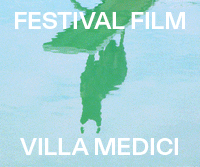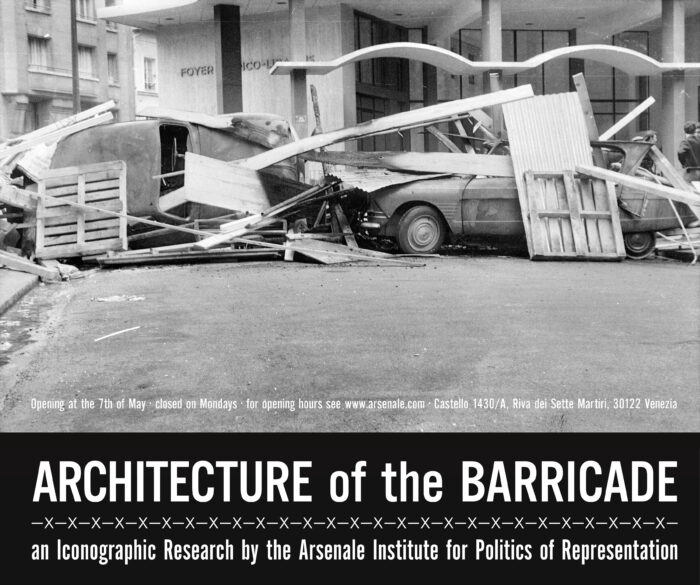Fake Nature, Fake Food, Real Power
How Aterraterra challenges standardisation and genetic control in agriculture
In 2003, the now-renowned Pomodoro di Pachino was granted Protected Geographical Indication (PGI) status by the European Union, a recognition meant to attest to its tradition and reputation as a regional agricultural product. Named after a small town in Sicily near Syracuse, the Pachino tomato is widely regarded as a staple of Mediterranean cuisine and a key element of the Italian culinary tradition. However, despite its prestigious label and apparent rootedness in local heritage, the true origin of the Pomodoro di Pachino lies in the laboratories of the Israeli biotech company Hazera Genetics, which introduced this variety to Sicily in 1989. This artificially engineered variety was specifically designed to thrive in arid, sun-drenched climates with saline groundwater, and was genetically selected for its sweetness, disease resistance, and long shelf life—qualities that made it ideal for industrial agriculture and global markets. Yet, despite the sunny, summery, and sensuous aura that often surrounds the tomato, its history in Europe is not only a living trace of European colonisation of the Americas and the commodification of indigenous plants for European markets, but it is also inextricably linked with the development of industrial capitalism.

The widespread commercialisation of tomatoes was indeed made possible by the work of the plant breeder Jack Hanna and engineer Coby Lorenzen at the University of California, Davis, in the late 1940s and 1950s. During the wartime shortage of field labour, the two researchers designed a mechanical harvester and a tomato that was suitable for mechanical harvesting, which was a hybrid of low stature and uniform maturity, producing similarly sized fruits. The tomatoes were picked green and were artificially ripened by ethylene gas during transport. The results were the small, uniform and tasteless tomatoes that are still sold in supermarkets, often indeed called “supermarket tomatoes”. When recollecting this story in one of his articles on the Los Angeles Times, environmental journalist Robert A. Jones ironically wrote that “history will identify the University of California, Davis, as the spot where the tomato had its soul stolen. […] This tomato was a death zone of taste, but underneath its skin the Food Scientists had engineered a superstructure that would withstand the insults of machine processing”.
It is against this legacy of industrial standardisation, genetic control, and monoculture that Aterraterra (Fabio Aranzulla and Luca Cinquemani) positions their practice, working across visual art, agriculture, and science, in order to experiment with alternative ways of thinking about food, cultivation, and multispecies life. Aterraterra’s projects investigate the difficult heritage of food plants, the entanglement between cultural institutions and non-human life forms, and the ecological transformations driven by climate change. Yet central to their practice is the concept of post-varietal communities, which challenges human control over cultivated plants by embracing a process of random hybridisation across different varieties. For a project commissioned by the Civic Museum of Castelbuono in Sicily, Aterraterra cultivated a tomato community composed of both domesticated varieties and drought-resistant wild species—such as Solanum pimpinellifolium—in response to the ongoing climate disruptions that have long affected Sicily. The plants grow and intertwine on a wooden structure designed in collaboration with architect Elena Catalano, created to encourage cross-pollination. The first generation of these uncontrolled hybrids will produce seeds that, once replanted, will develop into plants with unpredictable traits and forms, no longer traceable to any original commercial variety. In this way, Aterraterra reimagines the tomato not as a standardised product of industrial agriculture, but as a living, evolving community, shaped by ecological uncertainty rather than human design.

Part of the same project is San Marzano 2, a 3-by-6-meter billboard, placed in a public space of the town of Castelbuono, which draws on the history of a tomato variety nearly wiped out by a viral infection in 1991 and subsequently removed from the National Register of Agricultural and Horticultural Varieties. The work references and subverts familiar advertisements for tomato sauce, canned tomatoes, and similar products, where perfectly shaped, bright red tomatoes are typically accompanied by the tricolour flag, sun-drenched landscapes, and other clichés of Italian culture and Mediterranean joy. In contrast, San Marzano 2 presents an enlarged close-up of a tomato that reveals its pulp, fibres, and seeds, emphasising the organic, chromatically iridescent, and tactile texture of a vegetal body that appears both seductive and repulsive. This reversal of perspective shifts attention away from the smooth, shiny skin that has become central to the visual and symbolic narrative of the San Marzano tomato and its supposed naturalness.
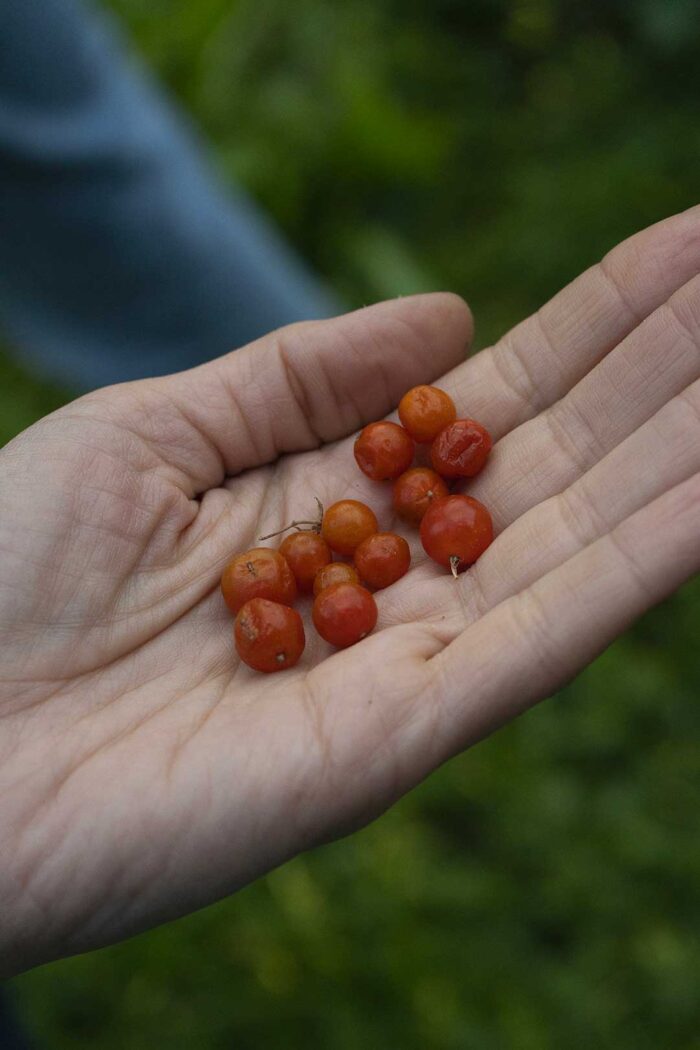
These kinds of experimentations appear to be particularly relevant if one considers that the development of modern forms of agriculture based on laboratory scientific research is not simply a result of the development of capitalism and the standardisation of knowledge through the paradigm of scientific knowledge. Rather, it constitutes a crucial element of the capitalist project of total control over nature for exploitative purposes, using technology to alter the environment and make it adequate to the functioning of its industrial apparatus. If the logic of farming has been, for millennia, a situated practice adapting to specific environments, taking into account its variable nature, the logic of scientific agriculture is, by contrast, one of adapting the environment as much as possible to its centralising and standardising models. As the American anthropologist James C. Scott argues in his book Sing Like a State, scientific agriculture overturns the functioning of agriculture as it begins with the definition of an ideal plant type, rather than with the specific features of the territory. Professional plant breeders then begin synthesising the strains that might combine to form a new genotype with the desired characteristics, which usually corresponds to the maximisation of productivity and uniformity of products. The operations for the cultivation of a specific genotype (planting, fertilisation, harvesting and so on) are then carefully described and presented as instructions which the farmers have to rigorously follow. The procedure is therefore formed by scientists in a laboratory far away from the ground and aims to transform the farmers into mere executioners of “standard“ farming procedures, growing the required genotype, applying the same fertilisers, pesticides, and amounts of water. Farmers’ local and situated knowledge is therefore cancelled, resulting in a vast process of deskilling, which drastically reduces the autonomy of the farmers. If agriculture and cultivating practices are simplified to the point where a set of rules can be applied to different kinds of conditions and geographies, those who formulate the rules and techniques have also expanded their power and control over farmers. Experienced and skilful cultivators are replaced by executioners following instructions produced elsewhere by agricultural scientists and engineers. It is therefore a process of “social taxidermy,” borrowing the expression used by American anthropologist Jane Jacobs to describe the process of reduction in diversity, situated knowledge, and collective practices proper of post-war United States.
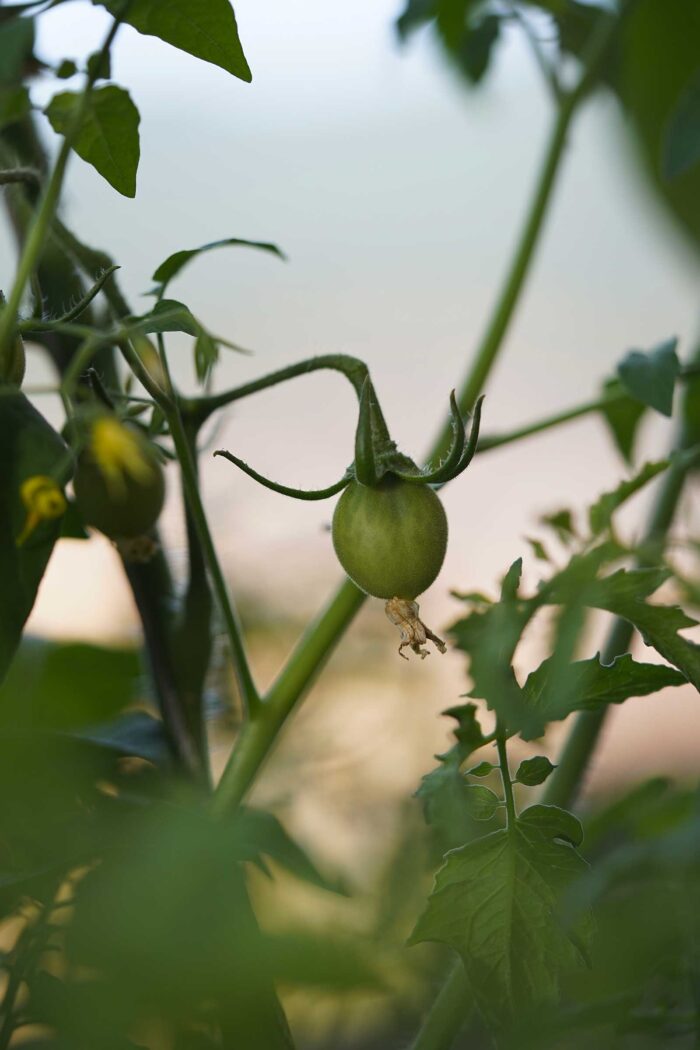
Scientific agriculture, understood as the reduction of ecological and practical knowledge into a set of standardised, universally applicable rules, exemplifies the broader project of Western modernity initiated with the scientific revolution in the 1600s. At its core, this project is driven by the ambition to liberate humans from their dependence on nature, but it pursues this emancipation through processes of domination and control. In their book Dialectic of Enlightenment, the German philosophers Theodor W. Adorno and Max Horkheimer draw a parallel between the modern scientific attitude toward nature and the authoritarian exercise of power over people. For them, modern forms of knowledge production are inseparable from manipulation. “The man of science knows things to the extent that he can make them,” they write, suggesting that the very idea of understanding is reduced to the ability to reshape and control. In this logic, nature reveals its “essence” only through transformation: what remains constant across this transformation is not a truth about the thing itself, but its capacity to be dominated, redefined, and utilised. Thus nature, stripped of its specificity, becomes raw material, a chaotic mass to be classified, organised, and exploited. Meanwhile, the modern subject, who once positioned themselves as the master of this system, is reduced to a hollow abstraction: “the all-powerful self becomes a mere having,” Adorno and Horkheimer write, “an abstract identity.” The domination of nature thus reflects onto human life itself, reducing it to instrumental terms. As in the case of scientific agriculture, the soil, the plant, the farmer, and the consumer are all subsumed into the same logic of production.
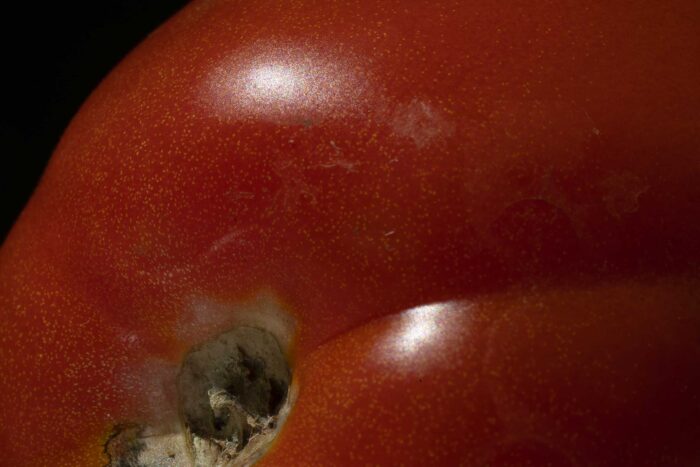
This overturn caused by scientific agriculture also has significant aesthetic implications as their fabricated ideal models have produced new images of them, thus altering the way one perceives and experiences agricultural products. This process can be explained through the notion of hyperreality, described by French philosopher Jean Baudrillard in his essay Simulacra and Simulations. In his work, hyperreality identifies the condition in which the boundaries between the real and its representation become increasingly blurred, to the point where the simulation effectively replaces the reality itself. Yet images, symbols, and signs circulating in our mediasphere do not just reflect the world, but actively construct how we understand and experience it. It is therefore not just a distortion of reality, rather, what we often take as “real” is already a simulation, with no clear original behind it. Hyperreality is therefore a condition in which simulations no longer point to any underlying truth or substance as they circulate in their own self-referential system, allowing one to live within that system as if it were reality itself. Yet, hyperreality is not the opposite of reality, but something more insidious, as it is the replacement of what is real with a new version of it that responds to the criteria of a capitalist system that, in its advanced form, has pervaded any aspect of reality.
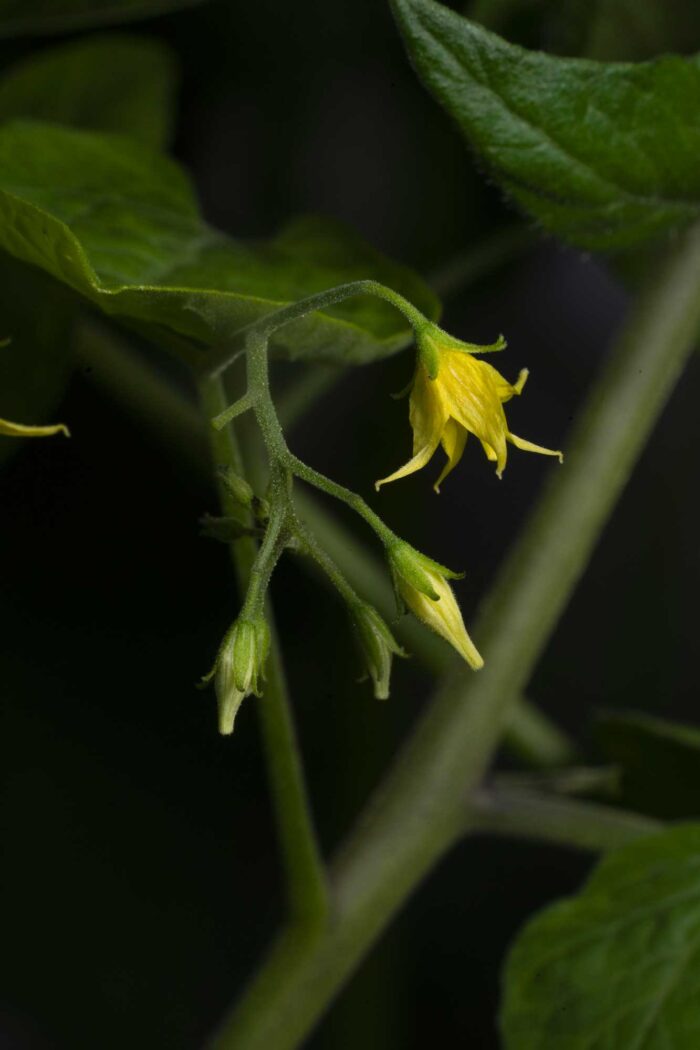
The food industry is a striking example of how Baudrillard notion of hyperreality functions. In late capitalist societies, food is often a simulation of natural products, as in the case of supermarket tomatoes. The industrial tomato, bred for uniformity, durability, and mechanical harvesting, exemplifies the way in which food has been reshaped to fit the logic of mass production and constant availability, which eventually transforms the aesthetic features of the product, eventually producing an image of it that replaces the original one. Supermarket tomatoes are engineered to look like an idealised version of a tomato, red, shiny, and unblemished, while losing tomato’s original feature, such as taste, texture, seasonality, and connection to place, thus visually performing the identity of a tomato while concealing its detachment from traditional agriculture, local ecosystems, and sensory richness. Referring to Baudrillard’s notion of hyperreality, supermarket tomatoes can be considered as a sign of a tomato, a simulation that circulates within a hyperreal food system designed to appeal to perception rather than embodied experience, being more a marketing fantasy than an agricultural product. In this sense, tomatoes are not just a piece of food, but rather a symbol embedded in a vast chain of simulations: advertising that markets freshness and health, supermarkets that display products like polished commodities, and recipes that assume tomatoes are always available, regardless of season or geography. In this way, the “tomato” becomes detached from its historical, geographical, and ecological roots, becoming a floating signifier within a globalised capitalist food economy. In this context, food becomes hyperreal. The more perfect and polished agricultural products become, the further they detach from the diverse and unpredictable natural world. So consuming supermarket tomatoes, for instance, means consuming a system of signs, a product of simulation that performs authenticity while masking its origins in technological control of nature and economy of profit.
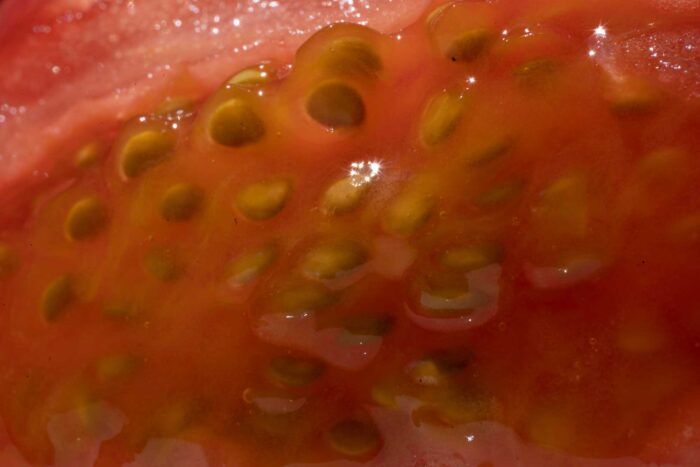
It is within this political and aesthetic framework that Aterraterra situates its practice, aiming to unveil and subvert the capitalist structures and epistemic dynamics that have reshaped natural ecosystems, social relations, and systems of knowledge according to the imperatives of productivity, efficiency, and profit. Through their hybrid interventions across agriculture, art, and science, the duo exposes the constructed nature of what is often perceived as “natural,” challenging the visual codes and industrial mechanisms that produce food as simulation. By cultivating post-varietal communities and embracing ecological uncertainty, Aterraterra proposes not only an alternative mode of cultivation but also a different mode of seeing and being with plants—one grounded in collaboration, unpredictability, and mutual transformation. In doing so, their work reclaims food as a site of cultural, ecological, and political imagination, offering a counter-image to the hyperreal aesthetics of industrial agriculture and reconnecting us with the material, historical, and multispecies complexity of what we eat.


